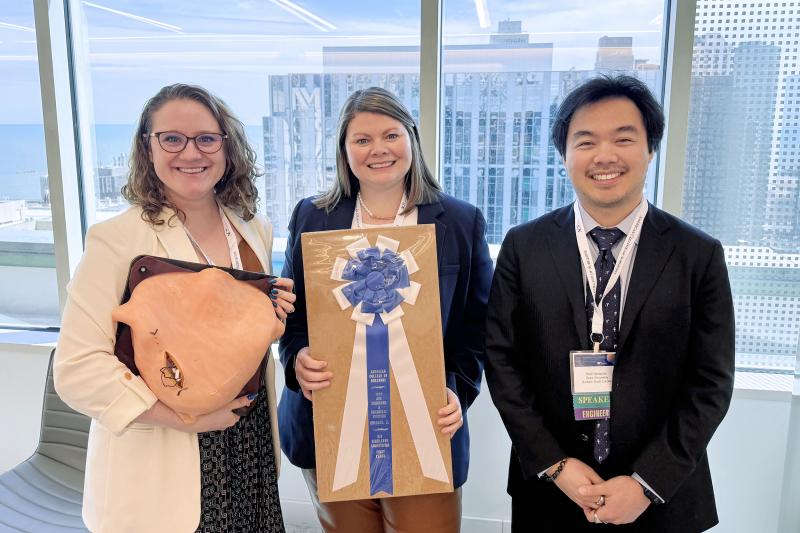
A 3D-printed model of a hernia created by a team from the Duke Department of Surgery's Surgical Education and Activities Laboratory (SEAL) won first place at the American College of Surgeons 2025 Surgeons and Engineers Meeting in March.
Led by SEAL operations manager Layla Triplett, MEd, the team built their own life-size inguinal hernia simulator using 3D printing, mesh, colored string, and a pipe cleaner. The model helps students and interns better understand hernia anatomy and practice repair techniques, including palpating bony landmarks to determine the correct incision site.
“The anatomy of an inguinal hernia is hard to understand, and there are not a lot of options currently on the market to help us train interns for this procedure,” Triplett said. “Our model is also much cheaper than any commercial model, so cost savings was also a factor.”
Other members of the winning team are Shannon Barter, MD, a SEAL education fellow; and Pratt School of Engineering PhD candidate Kent Yamamoto, SEAL engineering coordinator.
The 2025 Do-It-Yourself Simulator/Model Competition featured 17 self-built entries illustrating the surgical simulation community’s shared drive for creative solutions to enhance education and training. A panel of surgeon and engineer judges evaluated each entry, and meeting attendees had the opportunity to vote for their favorite.
More than 130 surgeons, academic and industry engineers, scientists, and others attended the 2025 meeting, now in its sixth year.